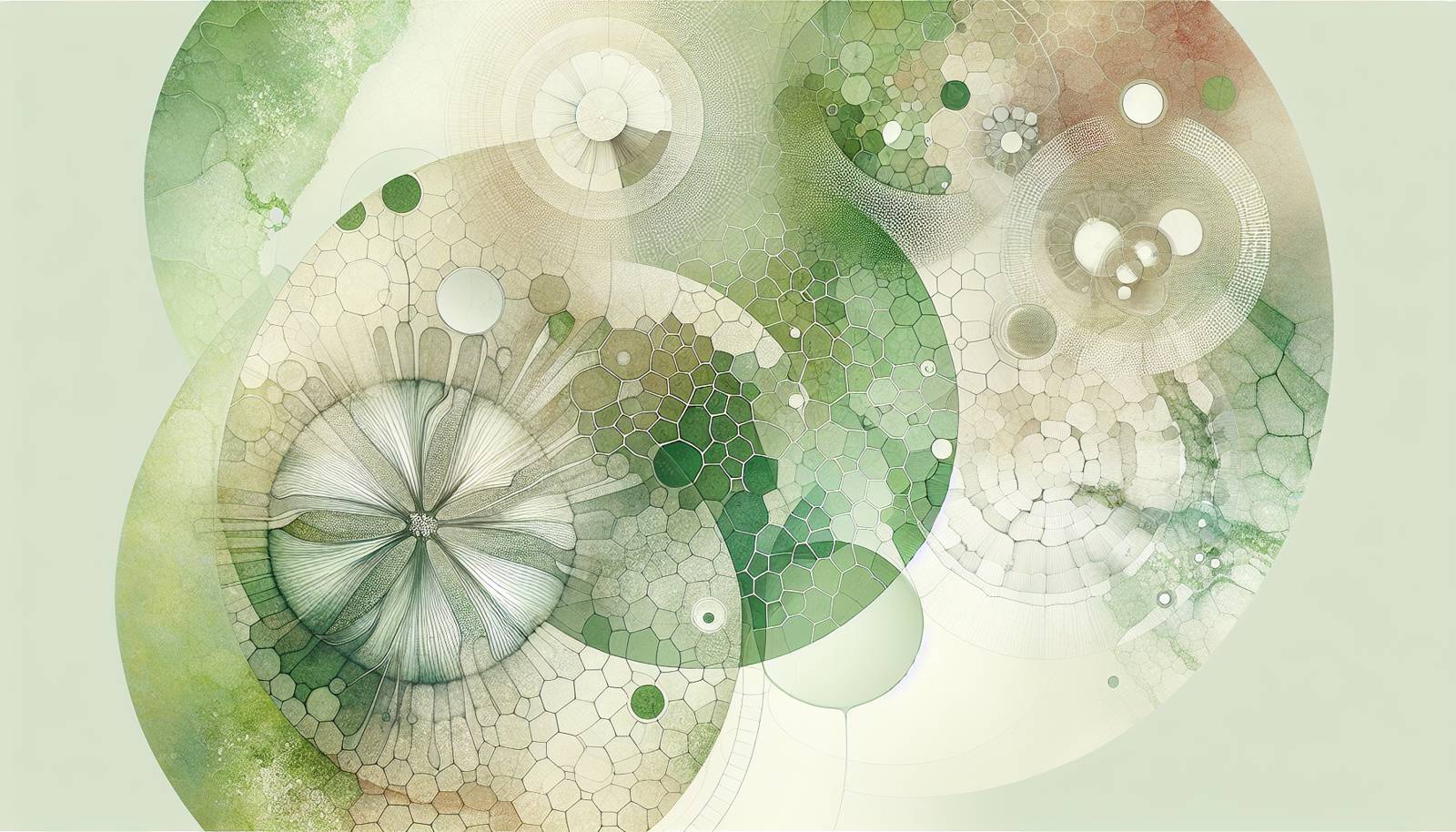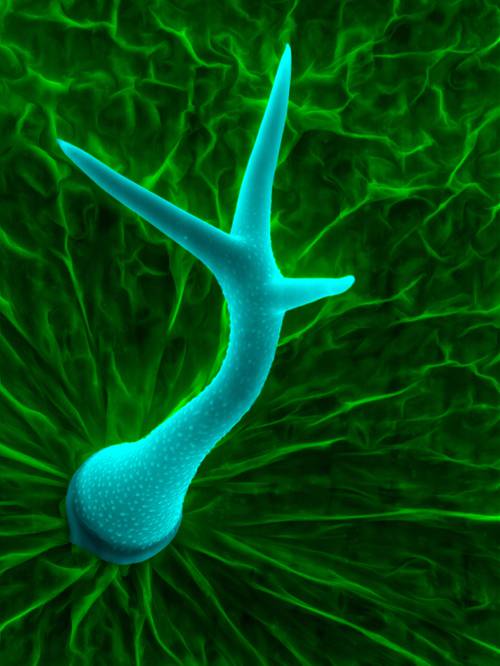
FAQ About Indoor Plant Epidermis Functions

What is the primary function of the epidermis in indoor plants?
The primary function of the epidermis in indoor plants is to act as a protective barrier. It covers all plant surfaces and helps prevent water loss, provides resistance against pathogens, and supports protection against environmental stressors like harmful UV rays.

How does the epidermis help in water retention for indoor plants?
The plant epidermis aids in water retention primarily through its waxy outer layer known as the cuticle. This cuticle is hydrophobic, meaning it repels water, reducing water loss through evaporation. This is especially beneficial for indoor plants, which may have less access to consistent watering.

What role does the epidermis play in the interaction of indoor plants with their environment?
The epidermis plays a critical role in regulating the interactions between indoor plants and their environment by controlling gas exchange. Stomata, small pores on the epidermis, regulate the exchange of gases like carbon dioxide and oxygen between the plant and the atmosphere, optimizing photosynthesis and respiration processes.

Do all indoor plants have the same type of epidermis?
Not all indoor plants have the same type of epidermis. Variations exist depending on species, environmental adaptations, and specific needs like light exposure, humidity resistance, and water retention capabilities. For instance, succulents often have a thicker cuticle to minimize water loss in drier environments.

Why is the plant epidermis important against pathogens for indoor plants?
The plant epidermis acts as a first line of defense against pathogens due to its tough and durable nature. It serves as a physical barrier, preventing bacteria, fungi, and viruses from penetrating the plant tissues. Healthy epidermal layers drastically reduce vulnerability to infections.

How does the epidermis contribute to a plant's ability to adapt to indoor lighting conditions?
The epidermis contains specialized cells that can influence how much light enters the leaf, which helps plants adapt to varying indoor lighting conditions. It can either enhance or limit light penetration, essential for maintaining effective photosynthesis in low-light environments.

Can the thickness of the epidermis affect an indoor plant's health?
Yes, the thickness of the epidermis can significantly impact an indoor plant's health. A thicker epidermis often provides better protection and water retention but may reduce photosynthetic efficiency. Conversely, a thinner epidermis might enhance gas exchange but leaves the plant more susceptible to damage and dehydration.

Does the epidermis of indoor plants contribute to reducing water loss in dry environments?
Yes, the epidermis significantly contributes to minimizing water loss especially in dry environments, through the presence of the cuticle. This waxy layer reduces evaporation by sealing moisture within the plant tissues, an adaptation crucial for survival indoors with limited watering.

What are stomata and what is their function in the epidermis of indoor plants?
Stomata are small openings found on the epidermis of indoor plants. They play a crucial role in facilitating gas exchange; this includes allowing carbon dioxide in for photosynthesis and letting oxygen and water vapor out. Their opening and closing are controlled to balance water retention and gas exchange.

How can I ensure my indoor plants have healthy epidermis layers?
To maintain healthy epidermis layers in indoor plants, ensure they are adequately watered without over-watering, as it could lead to fungal infections. Providing the right balance of light and ensuring the plant is free from physical damage also helps maintain its protective epidermal layer.

What structural features does the epidermis of indoor plants typically have?
The typical structural features of the plant epidermis include a single layer of tightly packed cells, covered by a waxy cuticle. Some may have additional structures like trichomes or hair-like extensions that can help in water retention and deterrence of pests.

Is epidermal tissue in indoor plants responsible for sensing environmental changes?
While not directly responsible for sensing environmental changes, the epidermal tissue responds to environmental stimuli by regulating stomatal aperture. This regulation helps the plant adjust to changes in humidity, temperature, and CO2 levels, facilitating necessary adaptations to dormancy and growth phases.

In what ways might the epidermis of indoor plants differ from outdoor plants?
The epidermis of indoor plants might differ from that of outdoor plants primarily in its thickness and waxiness. Indoor plants often have a more pronounced cuticular layer to combat lower humidity and reduced watering, while outdoor plants may have additional mechanisms to withstand direct UV exposure and pests.

Can damage to the epidermis affect the overall health of indoor plants?
Damage to the epidermis can detrimentally affect indoor plant health by making them susceptible to dehydration, pathogen invasion, and reduced ability to photosynthesize effectively. Immediate care, such as reducing exposure to harmful conditions and ensuring proper hydration, becomes critical in such cases.

Do trichomes present on some indoor plants' epidermis have specific functions?
Yes, trichomes, the hair-like outgrowths on the epidermis, serve several functions. They can reduce water loss by trapping moisture, protect against pests, and sometimes reflect excessive light to prevent overheating. These adaptations are especially beneficial for indoor plants exposed to variable conditions.

How does the epidermal structure aid indoor plants in UV protection?
The epidermal structure aids in UV protection through its cuticular layer that can reflect and absorb harmful UV rays. This protective layer minimizes DNA damage in plant cells, helping indoor plants maintain health under artificial lighting that might emit UV radiation.

What impact does inadequate lighting have on the epidermis of indoor plants?
Inadequate lighting can affect the epidermis by diminishing its development, resulting in thinner cuticles less effective at retaining water. Additionally, cells within the epidermis might not function optimally, potentially impacting gas exchange and increasing susceptibility to environmental stressors.

How can an abnormal epidermis layer indicate issues in indoor plants?
An abnormal epidermis, such as one that is discolored, damaged, or excessively thick, may indicate issues like disease, pest infestations, or environmental stress. These symptoms often require diagnosing the underlying issue and adjusting care practices accordingly.

What is the relationship between the epidermis and the mechanical support of indoor plants?
While the epidermis isn't primarily responsible for mechanical support, it plays a role in maintaining the structural integrity of indoor plants by preserving internal moisture balance, protecting against physical damage, and contributing to the rigidity by supporting cell wall formation.
